Influence of the Type of Macrocycle on the Stabilisation of the High Oxidation State of the Manganese Ion and Electrode Processes
Abstract
1. Introduction
2. Results and Discussion
2.1. Selected Aspects of the Synthesis of Complexes
2.2. Conductometric Investigations
2.3. Spectroscopy
2.3.1. UV/VIS/NIR Spectroscopy of Mononuclear Complexes
2.3.2. UV/VIS/NIR Spectroscopy of Dinuclear Complexes
2.3.3. IR Spectroscopy of Complexes
2.4. Electrochemical and Spectroelectrochemical Investigations
 and τ, defined as log
and τ, defined as log  = log(k1c0τ) + 0.047(ατ-4) and τ = (Eλ − E0f)/v, where Eλ denotes the potential at which the electrode polarisation changes, according to the procedure presented in [42]. The obtained results (Table 1) indicate that, in this group of complexes, the Mn3+ ion is stabilised to the greatest extent by (N-Me)Me2py [14]aneN4. On the other hand, to the smallest extent by oxo2[14]aneN4, most likely due to the reduced electron density of the two amide N atoms, affecting a worse complexation effect and thus an easier disproportionation reaction. All these ligands, however, stabilise Mn3+ ions better than the phenanthroline derivatives we studied earlier [42]—lower k1 values for the macrocyclic complexes.
= log(k1c0τ) + 0.047(ατ-4) and τ = (Eλ − E0f)/v, where Eλ denotes the potential at which the electrode polarisation changes, according to the procedure presented in [42]. The obtained results (Table 1) indicate that, in this group of complexes, the Mn3+ ion is stabilised to the greatest extent by (N-Me)Me2py [14]aneN4. On the other hand, to the smallest extent by oxo2[14]aneN4, most likely due to the reduced electron density of the two amide N atoms, affecting a worse complexation effect and thus an easier disproportionation reaction. All these ligands, however, stabilise Mn3+ ions better than the phenanthroline derivatives we studied earlier [42]—lower k1 values for the macrocyclic complexes.2.5. Potentiometric Investigations
3. Materials and Methods
3.1. Ligands
3.2. Complexes
3.2.1. Mononuclear Complexes
- trans-[MnIII([14]aneN4)Cl2]Cl·2H2O; Yield: 54%. Anal. Calcd. for C10H24N4Cl3Mn·2H2O: C, 30.20; H, 7.04; N, 14.09. Found C, 30.39; H, 7.00; N, 13.92;
- trans-[MnIIIMe6[14]aneN4)Cl2]Cl·2H2O; Yield: 44%. Anal. Calcd. for C16H36N4Cl3Mn·2H2O: C, 39.89; H, 8.30; N, 11.63. Found C, 39.97; H, 8.51; N, 11.68;
- cis-[MnIII([12]aneN4)Cl2]Cl·3H2O; Yield: 53%. Anal. Calcd. for C8H20N4Cl3Mn·3H2O: C, 24.79; H, 6.71; N, 14.46. Found C, 23.65; H, 6.75; N, 14.51;
- trans-[MnIII([15]aneN4)Cl2]Cl·3H2O; Yield: 51%. Anal. Calcd. for C11H26N4Cl3Mn·3H2O: C, 30.75; H, 7.45; N, 13.04. Found C, 31.18; H, 7.57; N, 13.08;
- [MnII((N-Me)2[14]aneN4)Cl]Cl·3H2O; Yield: 52%. Anal. Calcd. for C12H28N4Cl2Mn·3H2O: C, 35.30; H, 8.33; N, 13.73. Found C, 35.15; H, 7.99; N, 13.65;
- [MnII((N-Me)4[14]aneN4)Cl]Cl·5H2O; Yield: 50%. Anal. Calcd. for C14H32N4Cl2Mn·5H2O: C, 35.60; H, 8.89; N, 11.87. Found C, 35.98; H, 8.63; N, 11.91;
- [MnII((N-Me)Me2py[14]aneN4)Cl]Cl·H2O; Yield: 52%. Anal. Calcd. for C16H29N4Cl2Mn·H2O: C, 45.62; H, 7.36; N, 13.30. Found C, 45.74; H, 7.22; N, 13.37;
- [MnIIoxo2[14]aneN4)Cl2]·5H2O; Yield: 52%. Anal. Calcd. for C10H22O2N4Cl2Mn·5H2O: C, 26.92; H, 7.17; N, 12.56. Found C, 26.52; H, 7.02; N, 12.60.
3.2.2. Dinuclear Complexes of Mn(III) and Mn(IV)
- [MnIIIMnIV(μ-O)2([14]aneN4)2](ClO4)3·2H2O; Yield: 54%. Anal. Calcd. for C20H48O14N8Cl3Mn2·2H2O: C, 27.39; H, 5.93; N, 12.78. Found C, 27.33; H, 5.82; N, 12.71;
- [MnIIIMnIV(μ-O)2Me6[14]aneN4)2](ClO4)3·H2O; Yield: 45%. Anal. Calcd. for C32H72O14N8Cl3Mn2·2H2O: C, 37.42; H, 7.21; N, 10.91. Found C, 37.86; H, 7.05; N, 10.80;
- [MnIIIMnIV(μ-O)2([12]aneN4)2](ClO4)3·4H2O; Yield: 81%. Anal. Calcd. for C16H40O14N8Cl3Mn2·4H2O: C, 22.69; H, 5.67; N, 13.24. Found C, 23.91; H, 5.58; N, 13.20;
- [MnIIIMnIV(μ-O)2([15]aneN4)2](ClO4)3·2H2O; Yield: 51%. Anal. Calcd. for C22H52O14N8Cl3Mn2·2H2O: C, 29.20; H, 6.19; N, 12.39. Found C, 28.88; H, 6.02; N, 12.36.
3.3. Other Reagents
3.4. Instruments and Procedures
4. Conclusions
Supplementary Materials
Author Contributions
Funding
Institutional Review Board Statement
Informed Consent Statement
Data Availability Statement
Conflicts of Interest
References
- Karmakar, M.; Das, R.; Chattopadhyay, S. A comprehensive overview of the synthesis, structure, and application of azide bridged manganese(III) complexes with salen type Schiff base blocking ligands. Inorg. Chim. Acta 2024, 569, 122106. [Google Scholar] [CrossRef]
- Isopi, J.; Procopio, E.Q.; Veronese, L.; Malferrar, M.; Valenti, G.; Panigati, M.; Paolucci, F.; Marcaccio, M. Electrochemical Characterization and CO2 Reduction Reaction of a Family of Pyridazine-Bridged Dinuclear Mn(I) Carbonyl Complexes. Molecules 2023, 28, 1138. [Google Scholar] [CrossRef] [PubMed]
- Reale, G.; Calderoni, F.; Ghirardi, T.; Porto, F.; Illuminati, F.; Marvelli, L.; Martini, P.; Uccelli, L.; Tonini, E.; Bianco, L.D.; et al. Development and Evaluation of the Magnetic Properties of a New Manganese (II) Complex: A Potential MRI Contrast Agent. Int. J. Mol. Sci. 2023, 24, 3461. [Google Scholar] [CrossRef] [PubMed]
- Wallis, M.J.; Min, H.; Lindoy, L.F.; Li, F. Investigating the Conformations of a Family of [M2L3]4+ Helicates Using Single Crystal X-ray Diffraction. Molecules 2023, 28, 1404. [Google Scholar] [CrossRef]
- Rigamonti, L.; Zardi, P.; Carlino, S.; Demartin, F.; Castellano, C.; Pigani, L.; Ponti, A.; Ferretti, A.M.; Pasini, A. Selective Formation, Reactivity, Redox and Magnetic Properties of MnIII and FeIII Dinuclear Complexes with Shortened Salen-Type Schiff Base Ligands. Int. J. Mol. Sci. 2020, 21, 7882. [Google Scholar] [CrossRef] [PubMed]
- Saju, A.; Crawley, M.R.; MacMillan, S.N.; Magueres, P.L.; Campo, M.D.; Lacy, D.C. N-Oxide Coordination to Mn(III) Chloride. Molecules 2024, 29, 4670. [Google Scholar] [CrossRef] [PubMed]
- Ortaboy, S.; Karakurt, T.; Kaya, B.; Sahin, O.; Ülküseven, B. Manganese(III) complexes with a tetradentate thiosemicarbazone. Structural characterization, electrochemistry, antioxidant capability, molecular docking and dynamics simulation on the potential inhibitory activity of cyclin-dependent kinase 2. Polyhedron 2024, 261, 117128. [Google Scholar] [CrossRef]
- Hoang, T.; Mondal, S.; Allen, M.B.; Garcia, L.; Krause, J.A.; Oliver, A.G.; Prior, T.J.; Hubin, T.J. Synthesis and Characterization of Late Transition Metal Complexes of Mono-Acetate Pendant Armed Ethylene Cross-Bridged Tetraazamacrocycles with Promise as Oxidation Catalysts for Dye Bleaching. Molecules 2023, 28, 232. [Google Scholar] [CrossRef]
- Wen, J.; Geng, Z.; Yin, Y.; Wang, Z. A mononuclear Mn2+ complex based on a novel tris-(ethyl acetate) pendant-armed tetraazamacrocycle: Effect of pyridine on self-assembly and weak interactions. Inorg. Chem. Comm. 2012, 21, 16–20. [Google Scholar] [CrossRef]
- Shircliff, A.D.; Wilson, K.R.; Cannon-Smith, D.J.; Jones, D.J.; Zhang, Z.; Chen, Z.; Yin, G.; Prior, T.J.; Hubin, T.J. Synthesis, structural studies, and oxidation catalysis of the manganese(II), iron(II), and copper(II) complexes of a 2-pyridylmethyl pendant armed side-bridged cyclam. Inorg. Chem. Comm. 2015, 59, 71–75. [Google Scholar] [CrossRef]
- Hubin, T.J.; McCormick, J.M.; Collinson, S.R.; Buchalova, M.; Perkins, C.M.; Alcock, N.W.; Kahol, P.K.; Raghunathan, A.; Busch, D.H. New Iron(II) and Manganese(II) Complexes of Two Ultra-Rigid, Cross-Bridged Tetraazamacrocycles for Catalysis and Biomimicry. J. Am. Chem. Soc. 2000, 122, 2512–2522. [Google Scholar] [CrossRef]
- Pecoraro, V.L. Manganese Redox Enzymes; VCH Publishers: New York, NY, USA, 1992. [Google Scholar]
- Ariafard, A.; Longhurst, M.; Swiegers, G.F.; Stranger, R. Mechanisms of Mn(V)-Oxo to Mn(IV)-Oxyl Conversion: From Closed-Cubane Photosystem II to Mn(V) Catalysts and the Role of the Entering Ligands. Chem. Eur. J. 2024, 30, e202400396. [Google Scholar] [CrossRef]
- Zhao, X.; Li, J.; Jian, H.; Lu, M.; Wang, M. Two Novel Schiff Base Manganese Complexes as Bifunctional Electrocatalysts for CO2 Reduction and Water Oxidation. Molecules 2023, 28, 1074. [Google Scholar] [CrossRef]
- Pursche, D.; Triller, M.U.; Slinn, C.; Reddig, N.; Rompel, A.; Krebs, B. Mimicking the reduced, oxidized and azide inhibited form of manganese superoxide dismutase by mononuclear Mn compounds utilizing tridentate ligands. Inorg. Chim. Acta 2004, 357, 1695–1702. [Google Scholar] [CrossRef]
- Wu, A.J.; Penner-Hahn, J.E.; Pecoraro, V.L. Structural, Spectroscopic, and Reactivity Models for the Manganese Catalases. Chem. Rev. 2004, 104, 903–938. [Google Scholar] [CrossRef] [PubMed]
- Najafpour, M.M.; Renger, G.; Hołyńska, M.; Moghaddam, A.N.; Aro, E.M.; Carpentier, R.; Nishihara, H.; Eaton-Rye, J.J.; Shen, J.R.; Allakhverdiev, S.I. Manganese Compounds as Water-Oxidizing Catalysts: From the Natural Water-Oxidizing Complex to Nanosized Manganese Oxide Structures. Chem. Rev. 2016, 116, 2886–2936. [Google Scholar] [CrossRef]
- Mullins, C.S.; Pecoraro, V.L. Reflections on small molecule manganese models that seek to mimic photosynthetic water oxidation chemistry. Coord. Chem. Rev. 2008, 252, 416–443. [Google Scholar] [CrossRef] [PubMed]
- Bhowmick, A.; Hussein, R.; Bogacz, I.; Simon, P.S.; Ibrahim, M.; Chatterjee, R.; Doyle, M.D.; Cheah, M.H.; Fransson, T.; Chernev, P.; et al. Structural evidence for intermediates during O2 formation in photosystem II. Nature 2023, 617, 629–636. [Google Scholar] [CrossRef]
- Baituti, B.; Odisitse, S. A Computational Study of the S2 State in the Oxygen-Evolving Complex of Photosystem II by Electron Paramagnetic Resonance Spectroscopy. Molecules 2021, 26, 2699. [Google Scholar] [CrossRef] [PubMed]
- Mukhopadhyay, S.; Mandal, S.K.; Bhaduri, S.; Armstrong, W.H. Manganese Clusters with Relevance to Photosystem II. Chem. Rev. 2004, 104, 3981–4026. [Google Scholar] [CrossRef]
- Yagi, M.; Kaneko, M. Molecular Catalysts for Water Oxidation. Chem. Rev. 2001, 101, 21–36. [Google Scholar] [CrossRef] [PubMed]
- Goodson, P.A.; Hoodgson, D.J.; Michelsen, K. Synthesis and characterization of the mixed-valent complex ion di-μ-oxobis(1,4,8,11-tetraazacyclotetradecane)dimanganese(III, IV), [(cyclam)MnO]23+. Inorg. Chim. Acta 1990, 172, 49–57. [Google Scholar] [CrossRef]
- Brewer, K.J.; Calvin, M.; Lumpkin, R.S.; Otvos, J.W.; Spreer, L.O. Synthesis, structure, and characterization of a mixed-valence manganese(III)-manganese(IV) bis(.mu.-oxo) complex with a macrocyclic tetraaza ligand. Inorg. Chem. 1989, 28, 4446–4451. [Google Scholar] [CrossRef]
- Yan-Wei, R.; Jun, L.; Feng-Xing, Z.; Jin-Hua, Z.; Hui, G. Crystal Structure and Characterization of a New Mixed-valence Manganese(III/IV) Complex: [Mn2(cyclen)2(μ-O)2](ClO4)3·4H2O. Chin. J. Chem. 2005, 23, 418–420. [Google Scholar] [CrossRef]
- Iitaka, Y.; Shina, M.; Kimura, E. Crystal Structure of Dinitro(1,4,7,10-tetraazacyclododecane)cobalt(III) Chloride. Inorg. Chem. 1974, 13, 2886–2891. [Google Scholar] [CrossRef]
- Geary, W.I. The use of conductivity measurements in organic solvents for the characterisation of coordination compounds. Coord. Chem. Rev. 1971, 7, 81–122. [Google Scholar] [CrossRef]
- Bryan, P.S.; Dabrowiak, J.C. Transition Metal Complexes Containing an Optically Active Macrocyclic Ligand. Manganese(III), Nickel(II), and Copper(II). Inorg. Chem. 1975, 14, 299–302. [Google Scholar] [CrossRef]
- Hambley, T.W.; Lawrance, G.A.; Sangster, D.F.; Ward, C.B. Characterization, Redox Properties and Pulse-Radiolysis Study of Dichloro-(Tetraazacyclotetradecane)Manganese(III) Complexes, and X-ray Crystal-Structure of the meso-5,7,7,12,14,14-Hexamethyl-1,4,8,11-Tetraazacyclotetradecane Complex. Aust. J. Chem. 1987, 40, 883–893. [Google Scholar] [CrossRef]
- Hay, R.W.; Fraser, I. Preparation and characterization of transition metal complexes of 1,4,8,12-tetra-azacyclopentadecane ([15]aneN4). Polyhedron 1997, 16, 2223–2227. [Google Scholar] [CrossRef]
- Sabatini, L.; Fabbrizzi, L. Fitting of Nickel(II) Ion into the Two 14-Membered Tetraaza Macrocycles. Blue-to-Yellow Conversion and the Oxidation and Reduction Behavior. Inorg. Chem. 1979, 18, 438–444. [Google Scholar] [CrossRef]
- Coolman, J.P.; Schneider, P.W. Complexes of Cobalt(III) and Rhodium(III) with a Cyclic Tetradentate Secondary Amine. Inorg. Chem. 1966, 5, 1380–1384. [Google Scholar] [CrossRef]
- Brewer, K.J.; Liegeois, A.; Otvos, J.W.; Calvin, M.; Spreer, L.O. Synthesis and properties of two bimetallic mixed-valence di-μ-oxo manganese complexes with different tetra-aza macrocyclic ligands. J. Chem. Soc. Chem. Commun. 1988, 17, 1219–1220. [Google Scholar] [CrossRef]
- Ŏkawa, H.; Nakamura, M.; Kida, S. Binuclear Metal-Complexes Manganese(IV) Complexes Synthesized by Oxidation of Binuclear Manganese(II) Complexes of 2-(Salicylidene-Amino)Phenols with Tetrachloro-Ortho-Benzoquinone. Bull. Chem. Soc. Jpn. 1982, 55, 466–470. [Google Scholar] [CrossRef]
- Kessissoglou, D.P.; Li, X.; Butler, W.M.; Pecoraro, V.L. Mononuclear Manganese(IV) Complexes of Hydroxyl-Rich Schiff Base Ligands. Inorg. Chem. 1987, 26, 2487–2492. [Google Scholar] [CrossRef]
- Cooper, S.R.; Calvin, M. Mixed Valence Interactions in Di-μ-Bridged Manganese Complexes. J. Am. Chem. Soc. 1977, 99, 6623–6630. [Google Scholar] [CrossRef]
- Létumier, F.; Broeker, G.; Barbe, J.M.; Guilard, R.; Lucas, D.; Dahaoui-Gindrey, V.; Lecomte, C.; Thouin, L.; Amatore, C. Dichloro(1,4,8,11-tetraazacyclotetradecane)manganese(III) chloride: Cis-trans isomerisation evidenced by infrared and electrochemical studies. J. Chem. Soc., Dalton Trans. 1998, 13, 2233–2239. [Google Scholar] [CrossRef]
- Choi, J.-H.; Oh, I.-G.; Ryoo, K.S.; Lim, W.-T.; Park, Y.C.; Habibi, M.H. Structural and spectroscopic properties of trans-difluoro(1,4,8,12-tetraazacyclopentadecane)chromium(III) perchlorate hydrate. Spectrochim. Acta Part A 2006, 65, 1138–1143. [Google Scholar] [CrossRef]
- Choi, J.-H.; Kim, H.-S.; Habibi, M.H. Crystal Structure and Spectroscopic Properties of cis-β-[CrCl2(1,4,8,11-tetrazaundecane)chromium(III) Perchlorate. Bull. Korean Chem. Soc. 2008, 29, 1399–1402. [Google Scholar]
- Tomczyk, D.; Andrijewski, G.; Nowak, L.; Urbaniak, P.; Sroczyński, D. Synthesis, Spectrocopic and Electrochemical Properties of Mononuclear Mn(III) Complex and of Binuclear Di-µ-oxo Bridged Mn(III) and Mn(IV) Complex with Isocyclam. Inorg. Chim. Acta 2012, 390, 70–78. [Google Scholar] [CrossRef]
- Bard, A.J.; Faulkner, L.R. Electrochemical Methods, 2nd ed.; John Willey & Sons: New York, NY, USA, 2001. [Google Scholar]
- Tomczyk, D.; Seliger, P. Modification of Glassy Carbon Electrodes with Complexes of Manganese(II) with Some Phenanthroline Derivatives Immobilized in Nafion Layer. Int. J. Mol. Sci. 2024, 25, 2348. [Google Scholar] [CrossRef]
- Galus, Z. Electroanalytical Methods of Physical and Chemical Parameters Determination; PWN: Warsaw, Poland, 1979. [Google Scholar]
- Gans, P.; Sabatini, A.; Vacca, A. Investigation of equilibria in solution. Determination of equilibrium constants with the HYPERQUAD suite of programs. Talanta 1996, 43, 1739–1753. [Google Scholar] [CrossRef] [PubMed]
- Bucher, C.; Duval, E.; Barbe, J.M.; Yerpeaux, J.N.; Amatore, C.; Guilard, R.; Pape, L.L.; Latour, J.M.; Dahaoul, S.; Lecomte, C. Synthesis, X-ray Structure, Electrochemical, and EPR Studies of a Pentacoordinated Mn(II) Tetramethylcyclam Complex. Inorg. Chem. 2001, 40, 5722–5726. [Google Scholar] [CrossRef] [PubMed]
- Andrijewski, G.; Nowak, L.; Tomczyk, D.; Różański, R.; Dałkowski, R. Complex Formation Equilibria and Potentials of Mn(II)/Mn(III) Couple in the Presence of 1,10-Phenanthroline Derivatives in Aqueous solutions. Polish J. Chem. 2006, 80, 693–701. [Google Scholar]
- Motekajtis, R.J.; Martell, A.E. Program PKAS: A novel algorithm for the computation of successive protonation constants. Can. J. Chem. 1982, 60, 168–173. [Google Scholar] [CrossRef]
- Izquiedro, A.; Beltran, J.L. Miniglass, an interactive program for the evaluation of stability constants of metal/ligand complexes from potentiometric data. Anal. Chim. Acta 1986, 181, 87–96. [Google Scholar] [CrossRef]
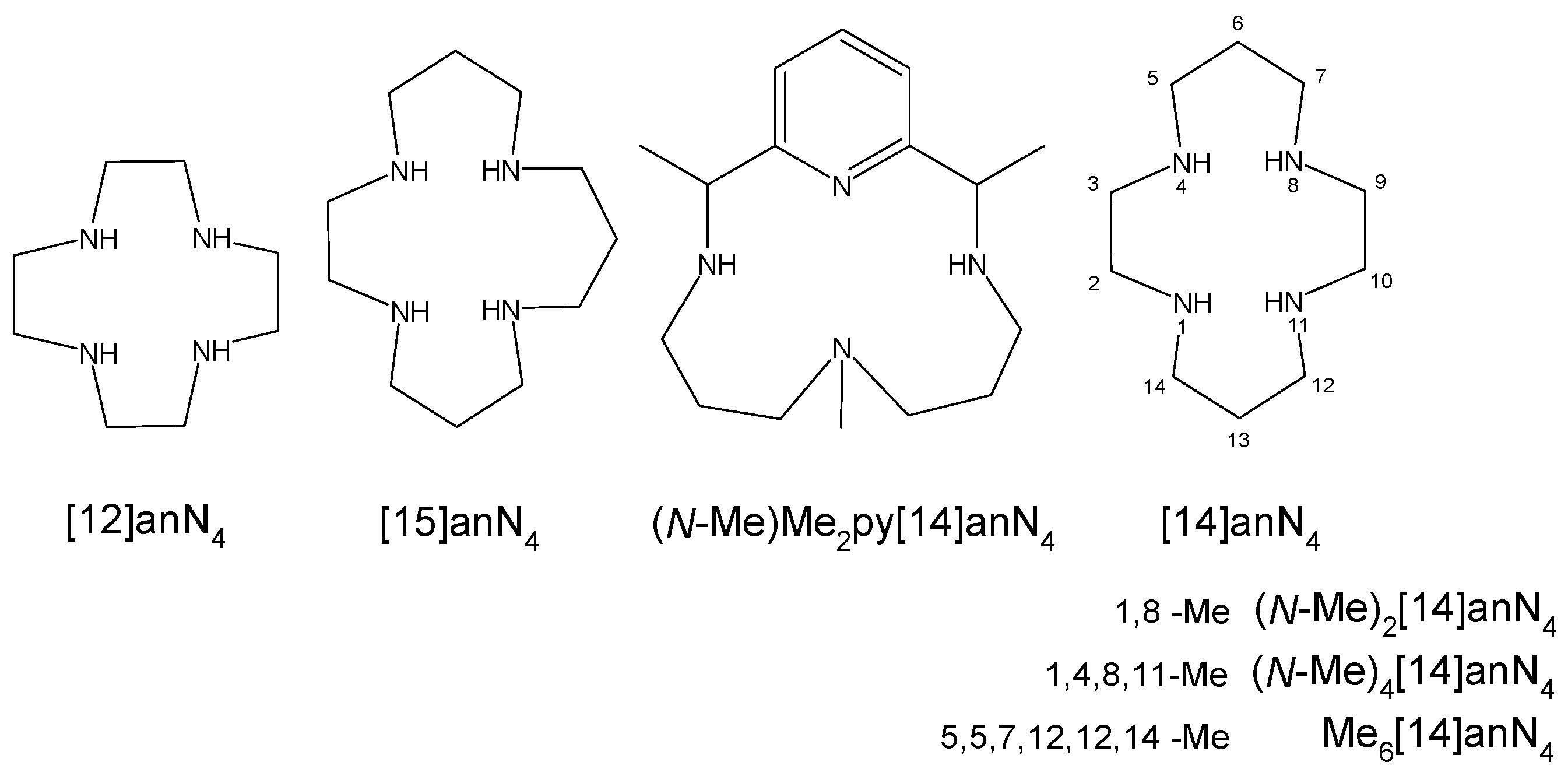

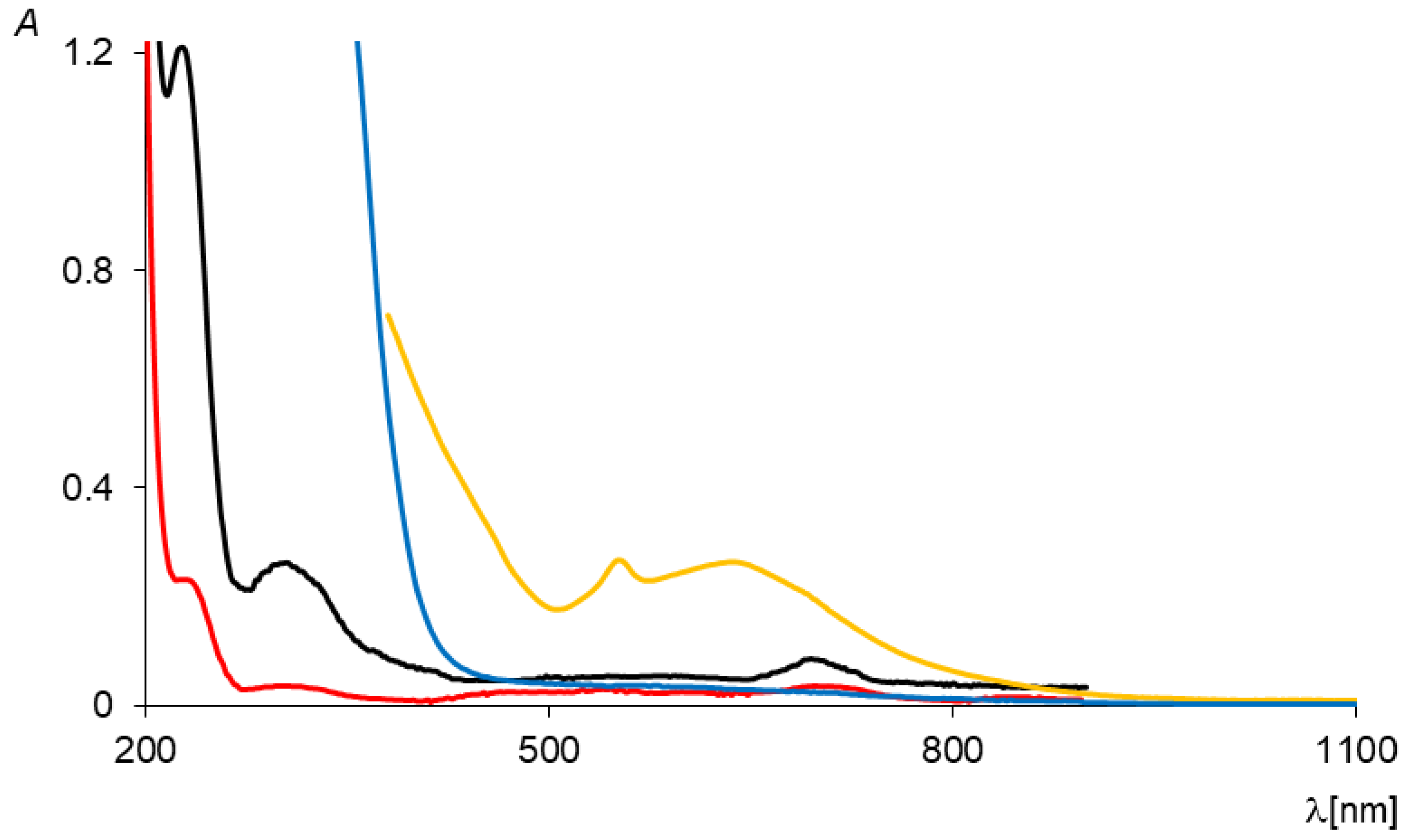
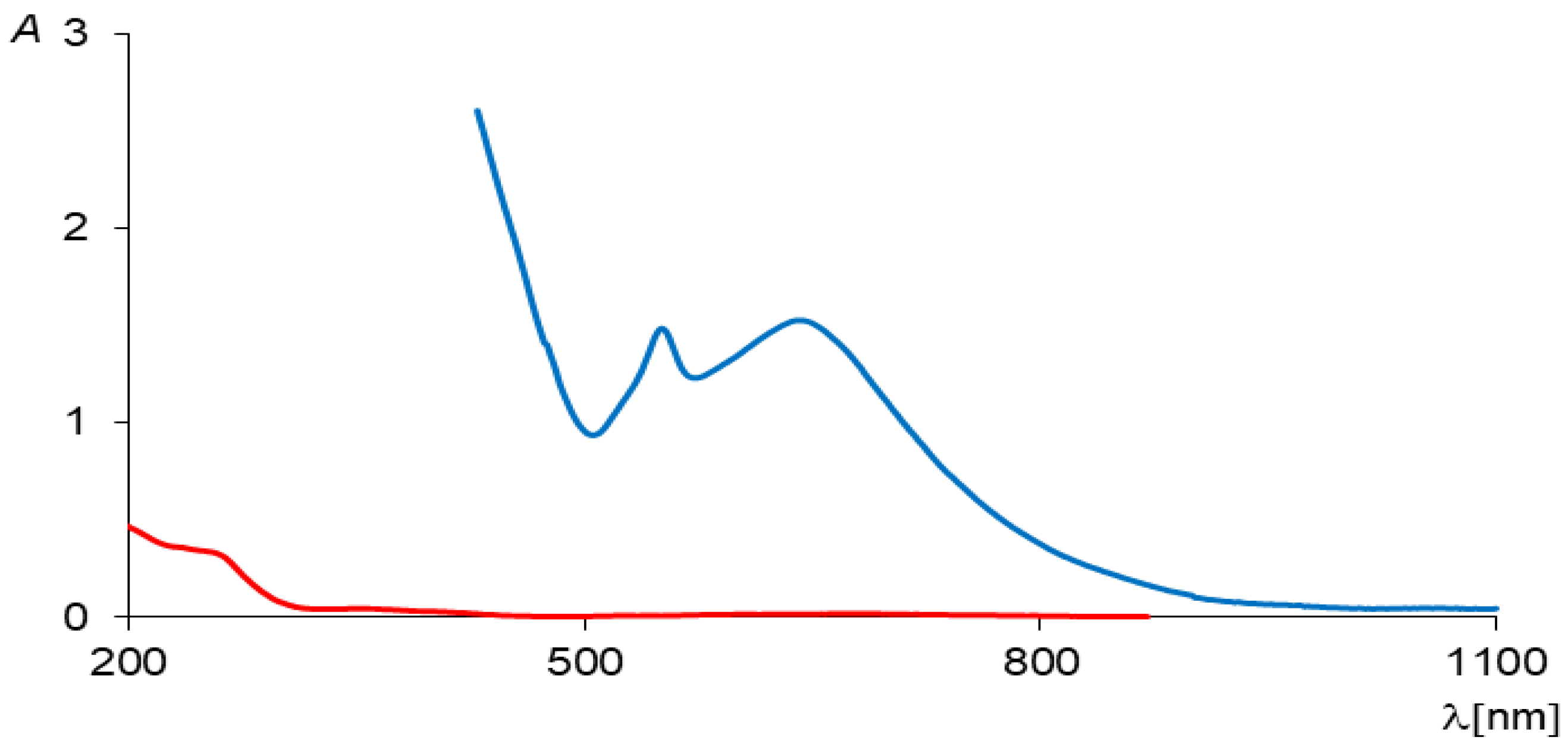
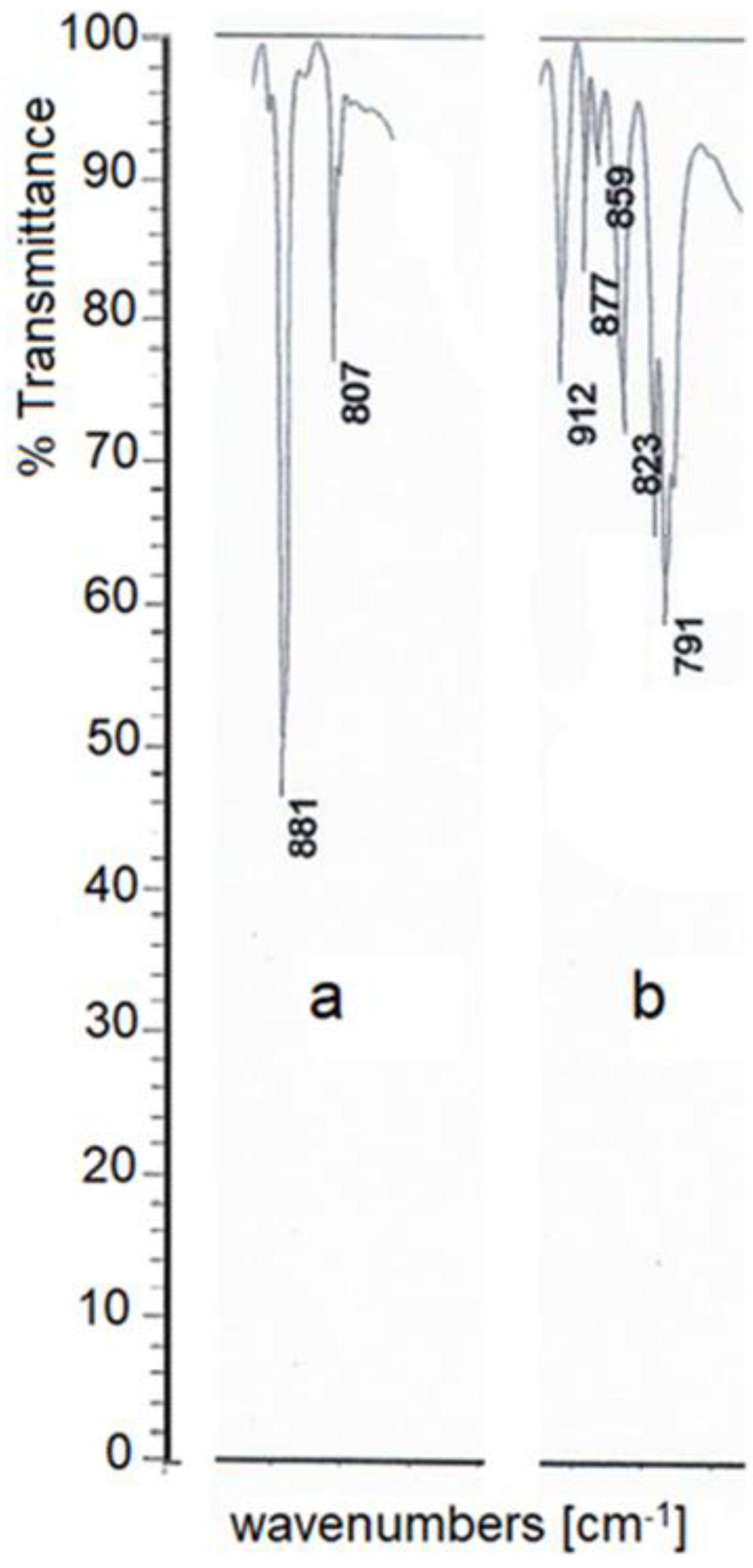
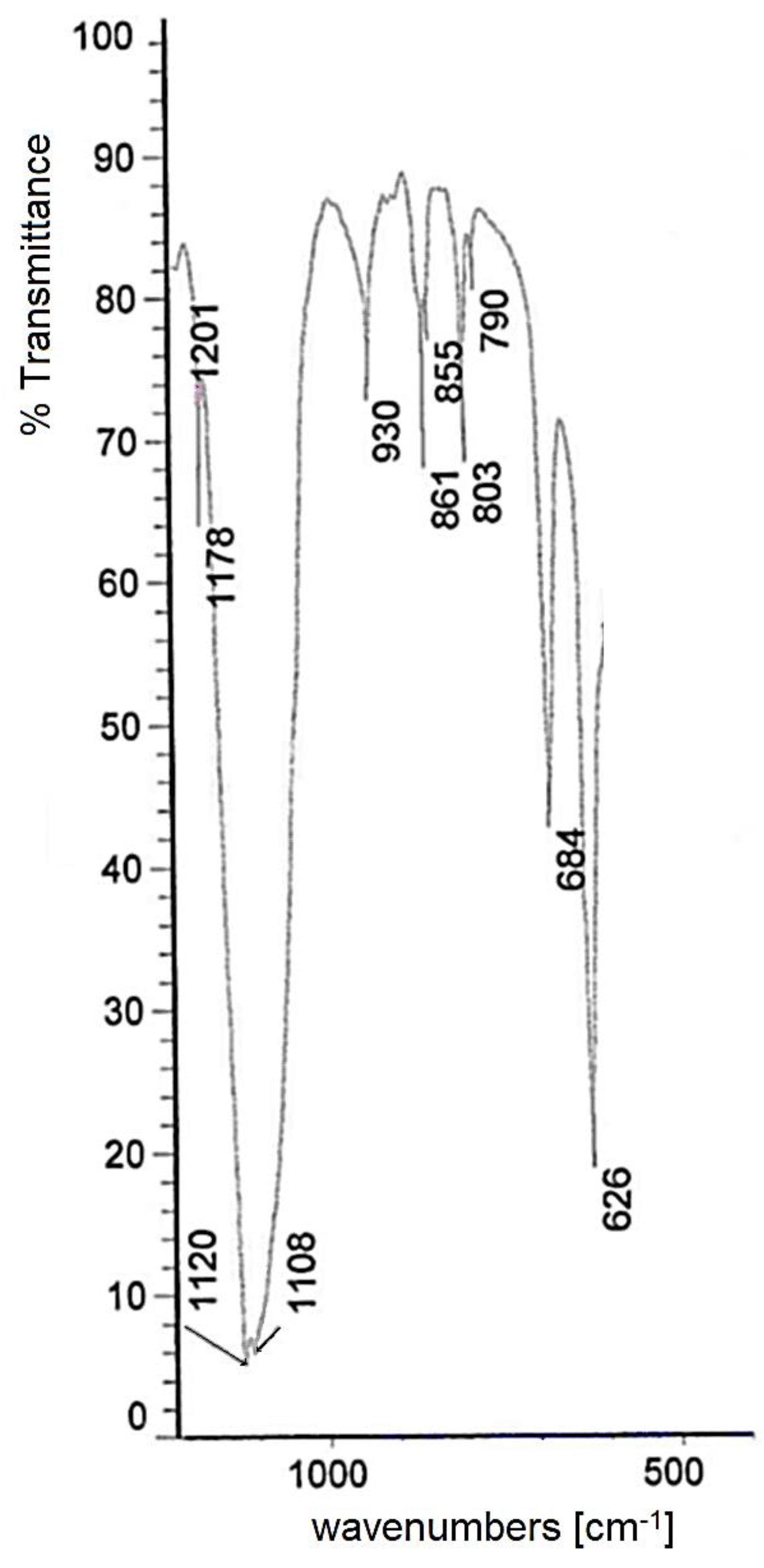
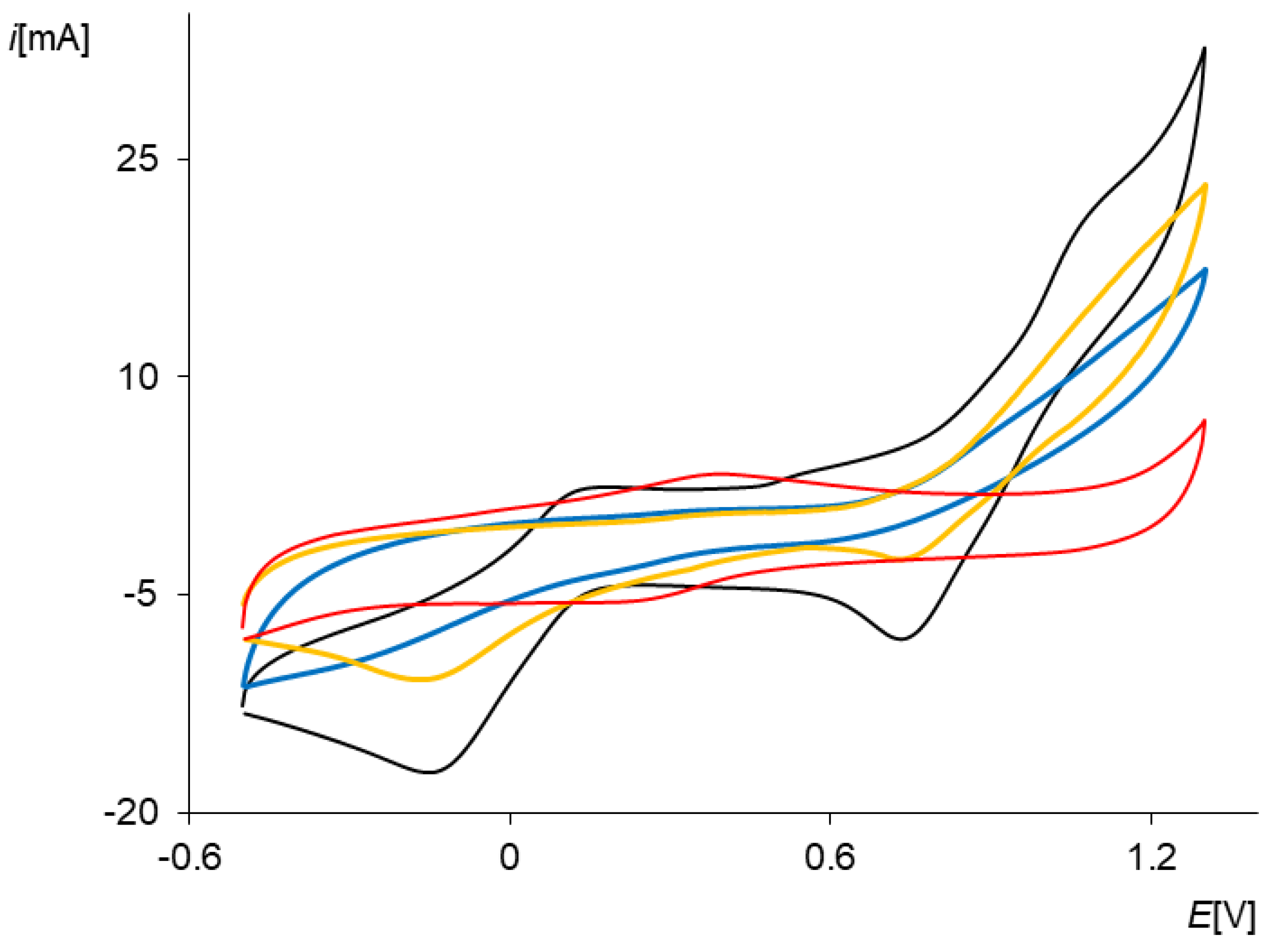
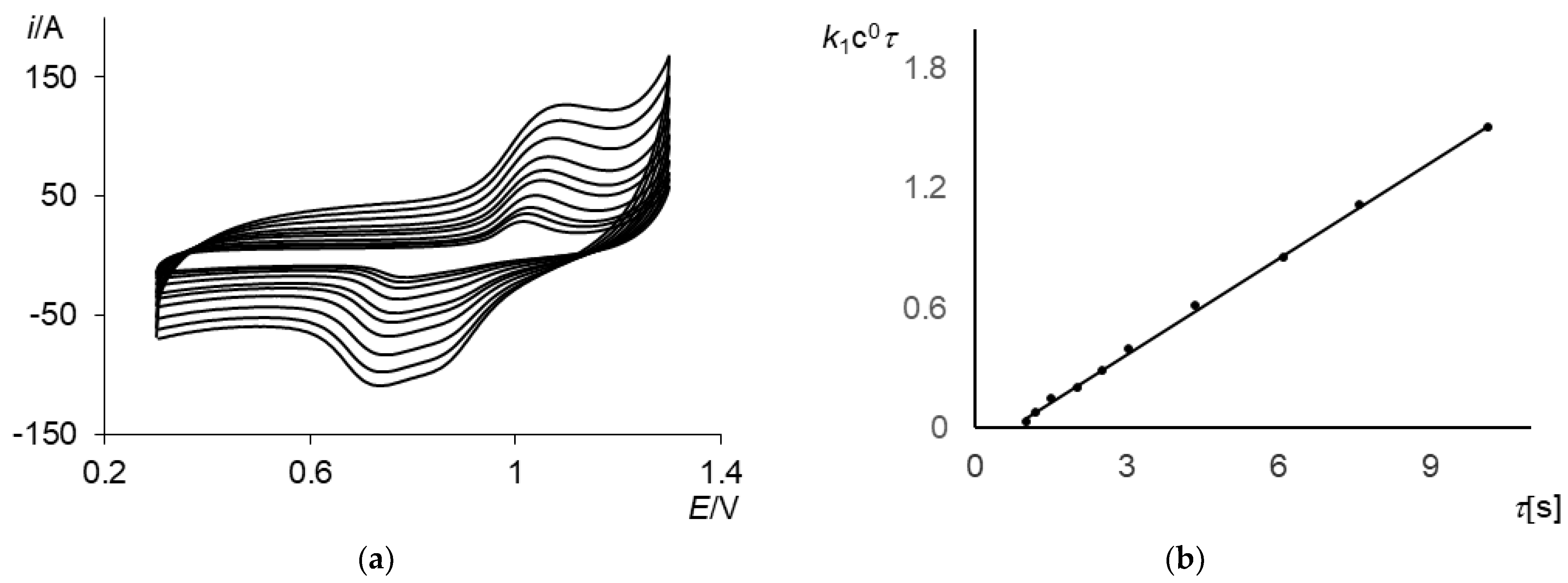
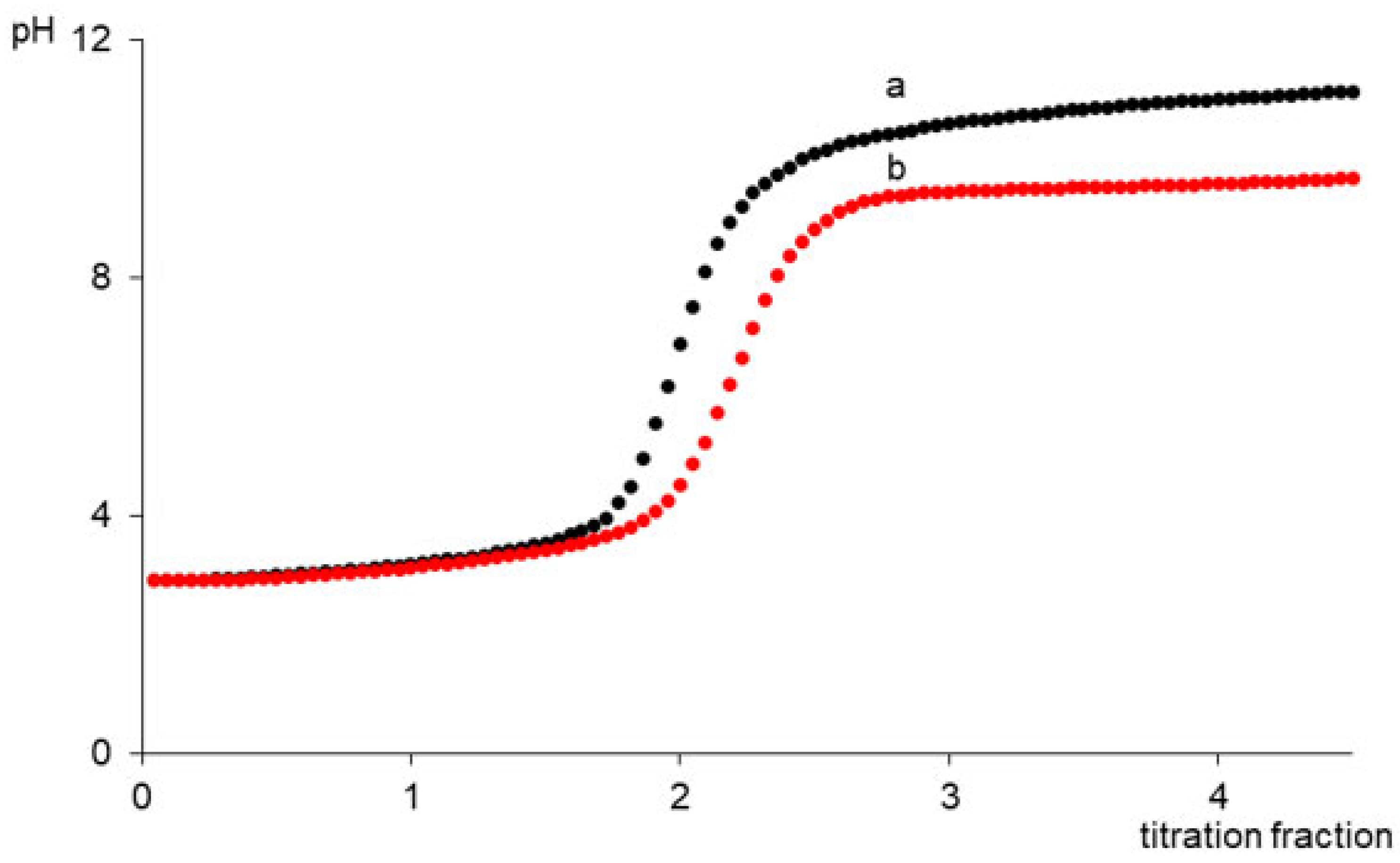
| Ligand | k1 | logβ(II) | logβ(III) |
|---|---|---|---|
| [14]anN4 | - | 11.06 ± 0.06 | - |
| Me6[14]anN4 | - | 11.12 ± 0.08 | - |
| [12]anN4 | - | 11.74 ± 0.06 | - |
| [15]anN4 | - | 10.81 ± 0.07 | - |
| (N-Me)2[14]anN4 | 3.19 ± 0.14 | 11.41 ± 0.06 | 22.68 ± 0.12 |
| (N-Me)4[14]anN4 | 2.87 ± 0.16 | 11.35 ± 0.06 | 22.14 ± 0.10 |
| (oxo)2[14]anN4 | 4.52 ± 0.12 | 10.26 ± 0.07 | 18.27 ± 0.12 |
| (N-Me)Me2py [14]anN4 | 1.01 ± 0.14 | 11.98 ± 0.08 | 24.06 ± 0.11 |
Disclaimer/Publisher’s Note: The statements, opinions and data contained in all publications are solely those of the individual author(s) and contributor(s) and not of MDPI and/or the editor(s). MDPI and/or the editor(s) disclaim responsibility for any injury to people or property resulting from any ideas, methods, instructions or products referred to in the content. |
© 2025 by the authors. Licensee MDPI, Basel, Switzerland. This article is an open access article distributed under the terms and conditions of the Creative Commons Attribution (CC BY) license (https://creativecommons.org/licenses/by/4.0/).
Share and Cite
Tomczyk, D.; Skrzypek, S.; Seliger, P. Influence of the Type of Macrocycle on the Stabilisation of the High Oxidation State of the Manganese Ion and Electrode Processes. Molecules 2025, 30, 1860. https://doi.org/10.3390/molecules30081860
Tomczyk D, Skrzypek S, Seliger P. Influence of the Type of Macrocycle on the Stabilisation of the High Oxidation State of the Manganese Ion and Electrode Processes. Molecules. 2025; 30(8):1860. https://doi.org/10.3390/molecules30081860
Chicago/Turabian StyleTomczyk, Danuta, Sławomira Skrzypek, and Piotr Seliger. 2025. "Influence of the Type of Macrocycle on the Stabilisation of the High Oxidation State of the Manganese Ion and Electrode Processes" Molecules 30, no. 8: 1860. https://doi.org/10.3390/molecules30081860
APA StyleTomczyk, D., Skrzypek, S., & Seliger, P. (2025). Influence of the Type of Macrocycle on the Stabilisation of the High Oxidation State of the Manganese Ion and Electrode Processes. Molecules, 30(8), 1860. https://doi.org/10.3390/molecules30081860






